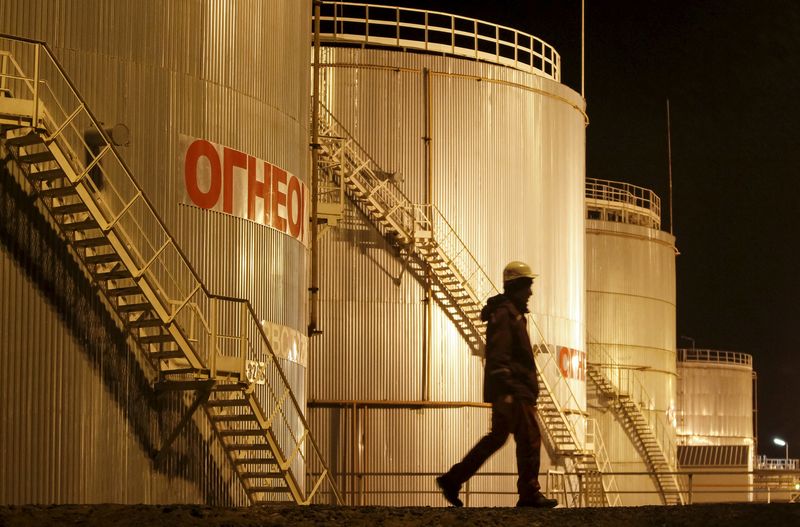By Peter Nurse
Investing.com -- Oil prices fell Thursday, weighed by fears that further hefty interest rate hikes, primarily by the Federal Reserve, will severely hit global economic growth and thus oil demand.
By 9:30 AM ET (1330 GMT), U.S. crude futures traded 3.7% lower at $92.72 a barrel, while the Brent contract fell 3.1% to $96.43.
U.S. Gasoline RBOB Futures were down 2.6% at $3.1493 a gallon.
Oil prices have fallen bank over the past two weeks, dropping back below $100 a barrel, on recession concerns despite global supplies remaining very tight as the West continues to sanction Russia crude exports.
These fears were exacerbated Wednesday by the news that U.S. consumer inflation climbed to a new 40-year high in June, while U.S. producer prices added to the sentiment Thursday, climbing by 1.1% from May, more than the 0.8% expected.
This further increases the pressure on the Federal Reserve to tighten monetary policy further, probably with a 100 basis points rate increase later this month, matching the hike by the Bank of Canada on Wednesday.
Bank of America predicted a “mild recession this year” in the U.S., the world’s main growth driver, with GDP to decline 1.4% from a year earlier, as hot inflation is spurring consumers to pull back.
Additionally, the European Commission cut its economic growth forecast for 2022 while the latest trade data out of China, the world’s largest importer of crude, showed the country’s daily crude oil imports in June sank to their lowest since July 2018, as refiners anticipated COVID lockdown measures to curb demand.
Adding to the weak sentiment in the crude market is the strength of the U.S. dollar, with the dollar index, which tracks the greenback against a basket of six other currencies, currently near its strongest level in two decades.
A stronger U.S. currency usually weighs on oil because it makes the dollar-priced commodity more expensive for holders of other currencies.
Data from the U.S. Energy Information Administration also pointed to slackening demand, with crude inventories rising by just over 3.2 million barrels last week while gasoline stocks rose by 5.8 million barrels.
“The large build in gasoline inventories was driven by a steep decline in implied demand over the week, which fell by 1.35MMbbls/d,” said analysts at ING, in a note. “This resulted in implied gasoline demand averaging 8.06MMbbls/d, which is the lowest level seen for this stage of the year in at least a decade.”
Away from the demand side, supply remains an issue with the Organization of Petroleum Exporting Countries struggling to seriously increase its production levels given the lack of infrastructure investment in many of the member countries.
U.S. President Joe Biden is set to travel to Saudi Arabia on Friday to try to negotiate an increase in oil production from the main player in the cartel, but it’s debatable how much capacity his hosts have to address crude supply shortages.
